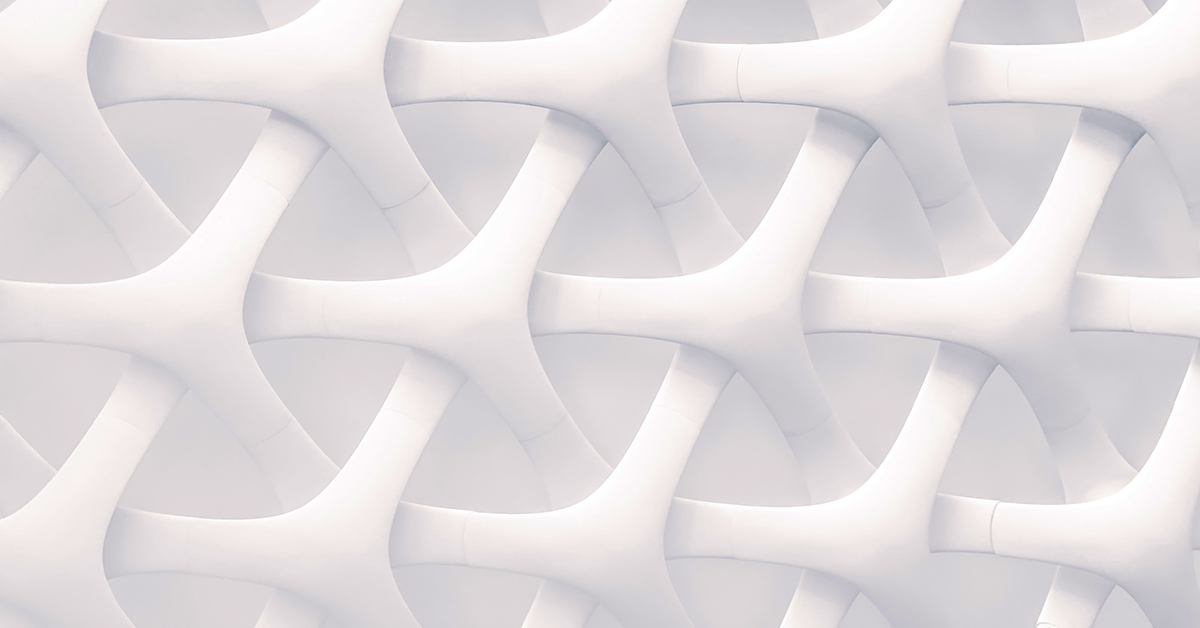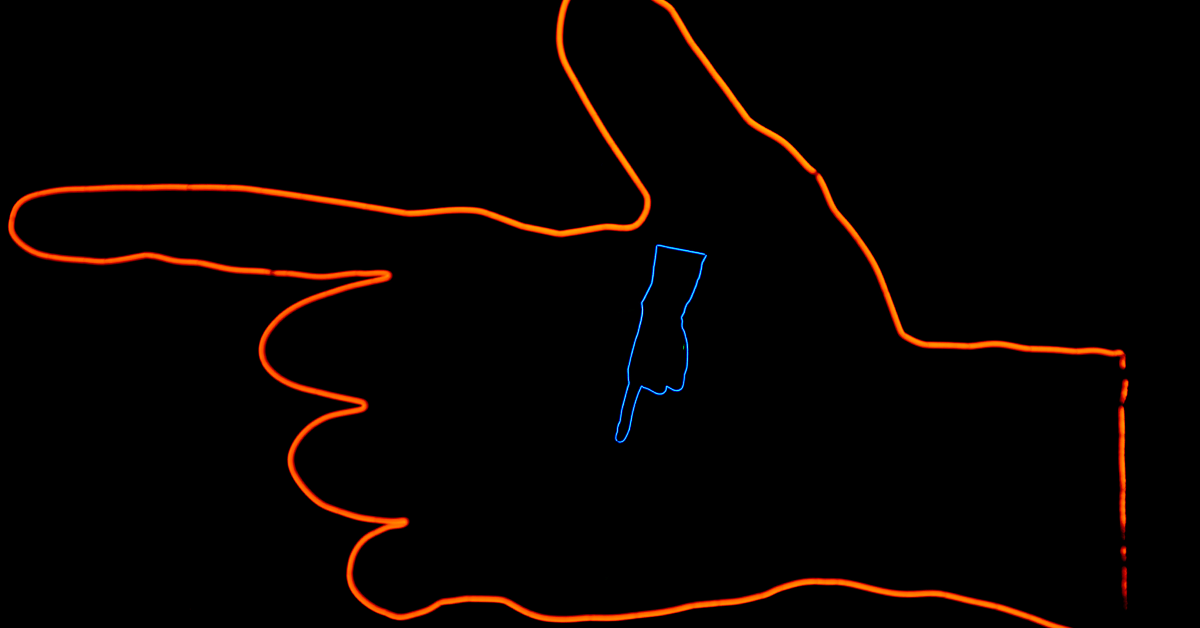OKRs empower UX Designers by setting clear, measurable objectives without dictating a specific solution.
They’re usually set high up in the business as a way of aligning each department to a shared set of goals, but they’re equally as powerful when set within the UX Design Team.
They help us to align customer goals, with business objectives, in a way that stakeholders understand.
In this article, I’ll share an overview of OKRs, along with a step-by-step process for how to set them within a UX Team, and promote them more broadly throughout the business.
What are OKRs?
The OKR framework, or Objectives and Key Results, are a goal-setting system designed to create alignment between teams, divisions, and the company as a whole.
The objective is a broad, aspirational statement of what the team or organization hopes to achieve.
Key results are measurable milestones underpinned by solid metrics that provide a clear indication of progress toward the objective.
Objectives and Key Results (OKRs) are a goal-setting system that creates alignment between teams, divisions, and the company as a whole.
OKRs are typically set high up at a strategic level within an organization. This allows each department to find its own way of contributing towards achieving the objectives.
They empower teams by giving them the freedom to decide how to achieve the objectives, but also provide clear guardrails on what needs to be achieved.
It works by setting high-level objectives which have measurable key results attached to them so that everyone knows what needs to be achieved, how success will be measured, and how progress toward those objectives will be tracked.
OKRs help ensure that everyone is working towards the same goals, and that everyone is aware of the importance of their individual contributions to the company’s overall success.
Why Should UX Designers Care About OKRs?
OKRs are good for designers because they empower them to find the best solution to a clearly defined objective.
This allows Designers to choose their own methods and make decisions based on evidence rather than designing a very specific feature that’s been handed down to them.
OKRs are good for designers because they allow them to find their own solutions to achieve clearly defined objectives.
OKRs bring focus to the work of a UX Designer by establishing clear and measurable goals. They help them to stay motivated by providing tangible targets. And, they provide them with valuable insight into how their efforts have contributed to the success of the company or organization they’re working with. This feedback can be used to inform future projects and improve the overall user experience.
3 Examples of UX Design OKRs
For a Design OKR to be meaningful, it must be specific, measurable, challenging but achievable, and have a timeline for completion.
They should also be reviewed regularly to ensure that the objectives remain aligned with the company’s goals and that progress is being made.
By setting high-leverage goals with OKRs, the UX Designer can focus on finding creative solutions to user challenges while still aligning with company strategies and getting results.
UX Design OKR Example 1
Objective 1:
- Improve the checkout experience for online shoppers
Key Results:
- Increase the conversion rate of online sales by 15%
- Decrease the shopping cart abandonment rate by 20%
- Improve the average time it takes for users to complete a purchase by 10 seconds
UX Design OKR Example 2
Objective 2:
- Increase user satisfaction with the mobile app
Key Results:
- Improve app store ratings from 4.0 to 4.5 stars
- Increase the number of daily active users by 20%
- Reduce the number of user-reported bugs by 25%
UX Design OKR Example 3
Objective 3:
- Improve the discoverability of new features
Key Results:
- Increase the number of users who discover new features by 25%
- Increase the number of users who use the new features by 15%
- Improve the average time it takes for users to discover new features by 5 seconds
Although the big benefit of OKRs is getting alignment across teams by giving them shared goals. You can still use them on a project-by-project basis for your own work If they aren’t already established at the leadership level within your organization.
This helps you to set clear and measurable goals in a format that business stakeholders will understand, helping you to demonstrate the value of User Experience Design and get that seat at the table.
A 6-Step Process for Writing and Introducing OKRs in UX Design
Effective OKRs should be tied in with the most important strategic objectives of the business.
Knowing what the business’s priority KPIs are for each quarter allows you to create KPIs that stakeholders care about. This helps win buy-in and support to get them off the ground.
Defining Effective OKRs for UX Design
The first step in creating effective OKRs for product design is to start by brainstorming the most important UX outcomes that you want to achieve with your projects. These outcomes should be based on user research and relate to your overall business objectives, as well as the needs of your users. Once you’ve identified your UX outcomes, you can begin to craft specific, measurable, and achievable OKRs that will guide your UX team toward success. Some examples of UX Outcomes could be: reducing the need to contact customer service, improving the success rate of your core journeys, and improving the learning curve during an onboarding process.
Refining and Adapting UX Design OKRs
Once you’ve drafted your OKRs, it is important to gather feedback and insights from your team and stakeholders. This feedback can be used to refine and update your OKRs, ensuring they’re achievable and aligned with your business goals. This is also a good opportunity to get buy-in from stakeholders and promote the use of OKRs as a way of aligning teams across the organization.
Aligning and Collaborating with Other Teams for UX Design OKRs
After you’ve developed your OKRs, share them with your product team and cross-functional partners. This helps to ensure that everyone is on the same page and that everyone understands the goals you’re working towards. Sharing your OKRs can also help to build excitement and motivation around your projects, as everyone will be working towards a common goal. Use them to provide context during updates and presentations and show how your activities all relate to achieving a core objective.
Communicating the Importance of UX Design OKRs to the Team
Once you’ve shared your OKRs with your team and stakeholders, it’s important to give them a proper launch and communicate their importance to the product team. This could include highlighting the impact that achieving these goals will have on the business, as well as providing specific examples of how achieving these goals will benefit users. By communicating the importance of your OKRs, you can help to motivate your product design team and ensure that everyone is working towards the same goal. This then allows your team members to plan their projects and learning development plans around these OKRs so that everyone is working in sync.
Monitoring Progress and Adjusting UX Design OKRs
After your OKRs have been launched, they need to be reviewed regularly throughout the quarter. This means providing updates during stand-ups and town halls on progress towards the goals, as well as providing feedback and support to team members who might be struggling to achieve their goals. Regular review and reinforcement of your OKRs can help to ensure that your UX team stays on track and that you are able to achieve your goals by the end of the quarter.
Evaluating the Effectiveness of UX Design OKRs with a Post-Mortem Review
Finally, at the end of the quarter, conduct a post-mortem to evaluate the success of your OKRs. This means reviewing progress towards the goals, as well as identifying areas for improvement and refinement for future quarters. By conducting a post-mortem, you can ensure that you’re continuously improving your OKRs and your User Experience Design processes, and that you are able to achieve success in your future projects.
When and When Not to Use OKRs in UX Design
As mentioned before, OKRs should be set high up at a strategic level within the business. This allows everyone in the organization to plan their work around a set of shared goals.
If OKRs aren’t already established within your organization, you can still introduce them at project level within the design team as a way of clearly communicating your goals to the business.
OKRs (Objectives and Key Results) should be set high up at a strategic level within the business in order to guide and measure the success of UX design projects.
It also helps you to share your goals with strategic partners within the business so that they can align their work to the same goals as you – bringing everyone in sync.
OKRs can be a powerful tool for guiding and measuring the success of UX design projects, but they might not always be the right fit for every situation.
Here are some situations where OKRs are useful for UX design, as well as situations where they might not be appropriate.
Situations where OKRs are useful for UX design:
- Projects with clear business objectives: OKRs work best when they align with broader business objectives. If a UX design project has clear business goals, such as increasing revenue or reducing customer churn, OKRs can be an effective way to guide the project towards these objectives.
- Collaborative projects: If a UX design project involves collaboration across different teams or departments, OKRs can help to align everyone towards a common goal. By setting shared goals, teams can work together towards a common purpose.
- Agile development processes: OKRs can be particularly useful in agile development processes, where teams work in short sprints and need to stay focused on specific objectives. By setting clear goals for each sprint, teams can make sure they’re making progress towards their larger goals and avoid getting sidetracked by unrelated tasks.
Situations where OKRs may not be appropriate for UX design:
- Research-focused projects: If a UX design project is focused primarily on research, such as user testing or ethnographic studies, OKRs may not be the best fit. In these situations, the focus should be on gathering insights and understanding user needs, rather than achieving specific business goals.
- Projects with unclear goals: If a project isn’t associated with any clear business goals, then it’s difficult to set effective OKRs that stakeholders care about. In this situation, it’s best to spend time working with stakeholders to get clear on what needs to be achieved before setting the OKRs. This could mean conducting more UX Discovery Research or getting clarity from the higher-ups on what needs to be achieved.
- Small, isolated projects: For small, isolated UX design projects, such as a single screen or feature, OKRs likely won’t be necessary. In these situations, it could be more effective to follow a more traditional UX approach of identifying issues, creating solutions, and validating that you’ve improved the usability through usability testing.
In Summary
OKRs, or Objectives and Key Results, are a goal-setting framework used in performance management that can be effective for UX design teams. OKRs involve setting specific, measurable goals that can be tracked and evaluated over a period of time, typically in a 3-10 month cycle. They are particularly useful for UX design when there is a need to align design goals with business objectives, or to establish clear objectives and measurable outcomes for a design project. However, OKRs may not be appropriate in all situations, and factors such as team size, design process, and the nature of the design work should be considered before implementing them. Examples of effective OKRs for UX design include improving user satisfaction or increasing the number of users who complete a specific task. John Doerr, a venture capitalist, is credited with popularizing the OKR framework, which has since been adopted by many engineering and product teams.
Key Takeaways
- Good design OKRs bring together business objectives and UX outcomes.
- They allow product design teams and engineering teams to act autonomously while all working towards the same objectives.
- This allows UX Designers to focus their design deliverables on resolving design issues that come from UX Research rather than being dictated from elsewhere in the business.
- An effective OKR is specific, measurable, and realistic and, when achieved, helps to achieve customer success.
- They started out as a way of measuring performance in business but have become popular in Design Thinking to guide design sprints and goal setting for product and UX teams.
- Start by drafting OKRs, getting feedback from stakeholders, then sharing them with your co-workers so that everyone can work towards the same goals.
📸 Shoutout to Milad Fakurian for the cover image


